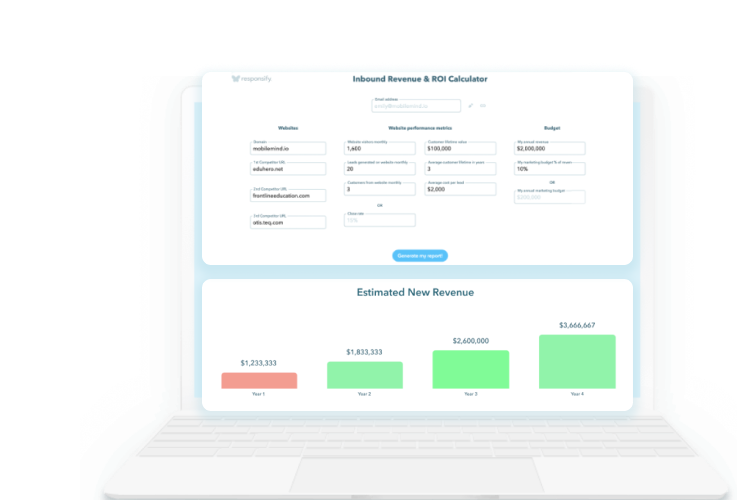 792 Views
792 Views  4 min read
4 min readEvery Learning Management System (LMS) salesperson wants to increase their sales. In the past, and in many cases nowadays, improving sales means investing a lot of money on ads and talking to as many people as possible without considering whether or not the lead is interested. Now, buyers are savvier, and decision-makers in companies and educational institutions are no exception. According to a report by the Earnest Agency, 81% of customers start their buying process by looking for information online. This means that the most effective way to keep their focus is by supplying valuable and relevant content that they are trying to find, when they are trying to find it. This strategy is called Inbound. Here are six useful Inbound strategies to increase your Learning Management System (LMS) sales:
The first step toward enhancing your sales is to identify who you are marketing to. A Buyer Persona is an imaginary persona that mirrors your perfect customer. For example, you can have ‘Clinician Carla’, ‘Private Practitioner Peter’ or ‘Medical Director Dan’, all that would have an interest in your Learning Management System (LMS) services or product. Do some research on their roles in the company, their goals, and the obstacles. As soon as you have determined your Buyer Personas, it will be easier to target them in a way that will boost your sales.
After specifying your Buyer Personas, you should develop routine content that resolves your optimal buyers’ objectives and difficulties. It is also critical that content speaks with your potential customers in various phases (Awareness, Consideration, and Decision) of the Buyer’s Journey. You can find out more about their needs in each phase of the journey by performing studies, calling your existing customers, or checking out market journals and publications. In addition to doing this research, you could sign up for relevant online forums to observe and find more trending conversations. Document the most preferred topics and then develop a calendar for producing content for each phase. The content could be anything from social media posts to whitepapers, ebooks, or reports. Producing content that targets the best market on a consistent basis will develop you as an authority in the Learning Management System (LMS) market and build more trust with your leads.
Your Learning Management System company’s website will regularly be the first point of connection your leads make to your organization. You need to make sure that your site leaves visitors with a solid impression and an enjoyable User Experience. Since visitors will be looking at your site from both computers and smartphones, make sure the layout is responsive. Use fonts and colors that will make the content stand out. The site’s navigation should be straightforward and easy for site visitors to look at different pages. You also want the page to load quickly. Having an optimized site that is customer-centered will encourage visitors to come back and will boost your chances for making more sales.
It doesn’t matter if you have a great website if no one knows it exists. Search Engine Optimization (SEO) is one of the best ways to make your site more noticeable online. The first thing you should do is conduct research for words and phrases that people sure when searching online. Make sure to include these words in your meta summaries, blogs, page URLs, headline, and alt messages. Internal linking (linking to other web pages within your site) is also helpful for SEO. Using all of these strategies will increase your search engine position, allowing you to bring in more site visitors and up your lead conversions.
You can use social media to keep an eye on conversations about the Learning Management System market, your competition, and your brand name. Leveraging social media will help provide you with ideas of topics you could use on your blog. You could also engage your target market using social media and position yourself as a professional in the sector. Social media is a great way to drive traffic back to your site. Share engaging photos and stories associated with your brand name and leave links to your site. Also, whenever you publish new content on your site, update your followers by sharing it on social media. When your posts get comments, liked, or shared, you’ll get more leads. Some social media networks also allow you to include a “Buy” button which allows potential customers to make a purchase without needing to go to your site. According to Sprout Social, 70% of customers look at social media before making a buying choice.
You should regularly examine your efforts. Doing so will give you an idea of which initiatives are working and which aren’t. For example, you could find out the source of your site visitors. How many came via social media? How many came through email marketing? You also need to track conversions. How many site visitors became leads, and then turned into clients? Luckily, there are many tools out there like the Hubspot CRM that will help you evaluate your work.
How prepared do you really feel about starting your very own Inbound Sales journey? It does take some researching, planning, and experimentation in the beginning. But once you improve your sales process based upon your customer’s buyer’s journey, and supply the best content at the correct time, you will be happy you did. We’ve helped many gifted salespeople integrate Inbound right into their sales process. Don’t hesitate to schedule your free strategy session to help you review your methods and get free advice on how to increase your sales!
